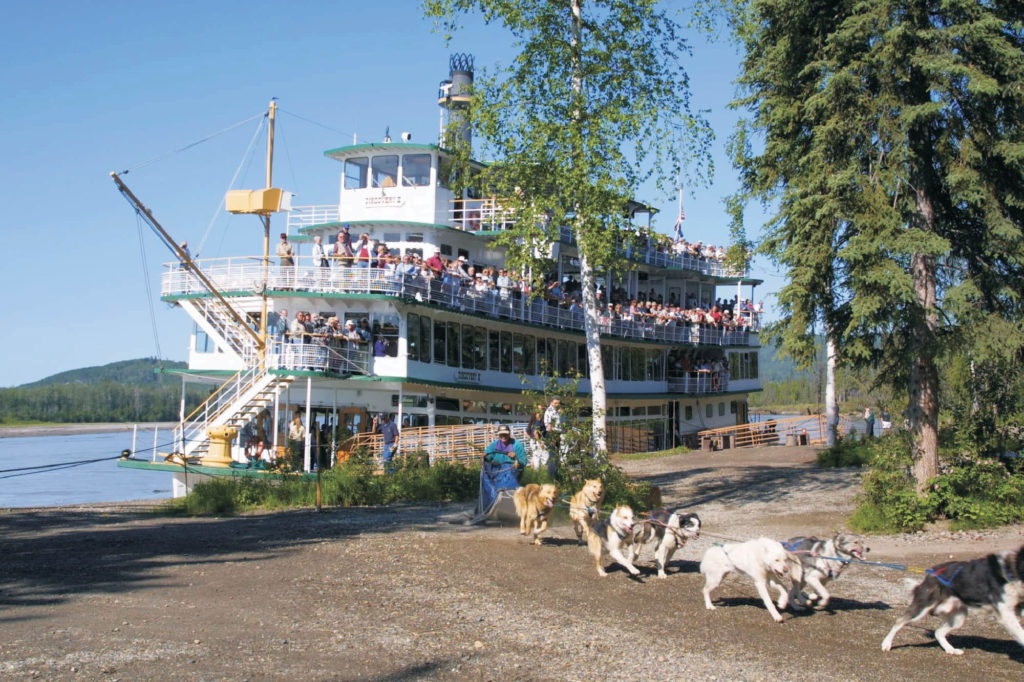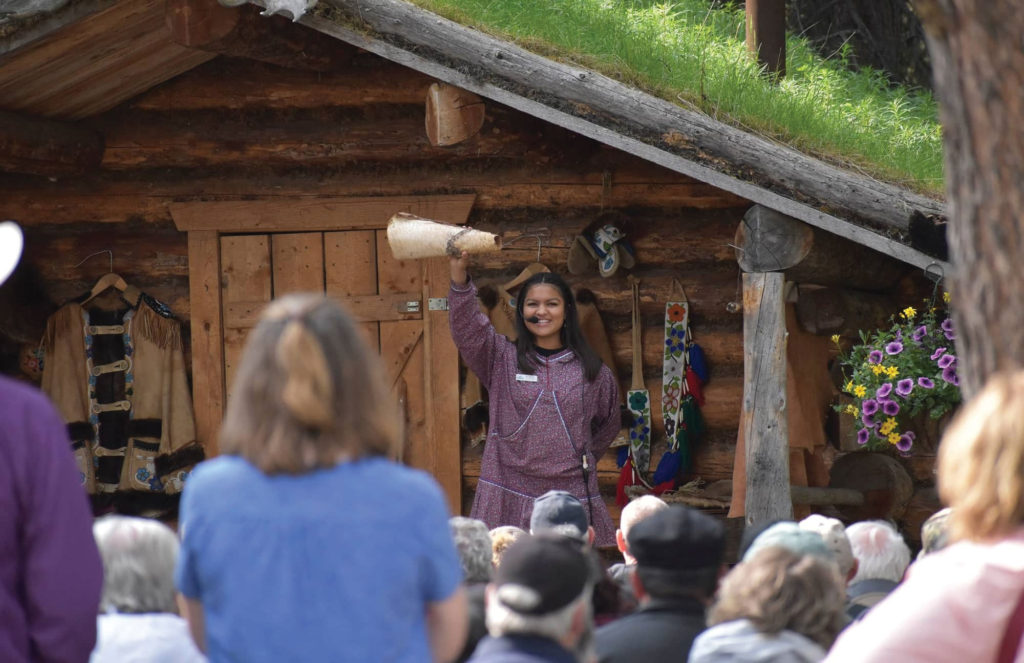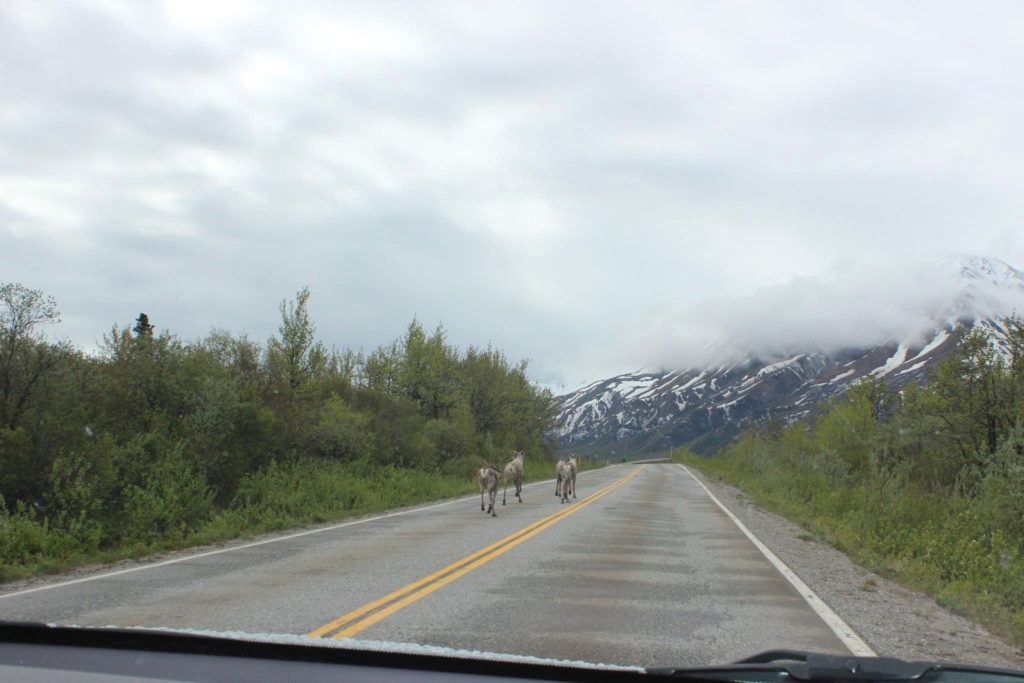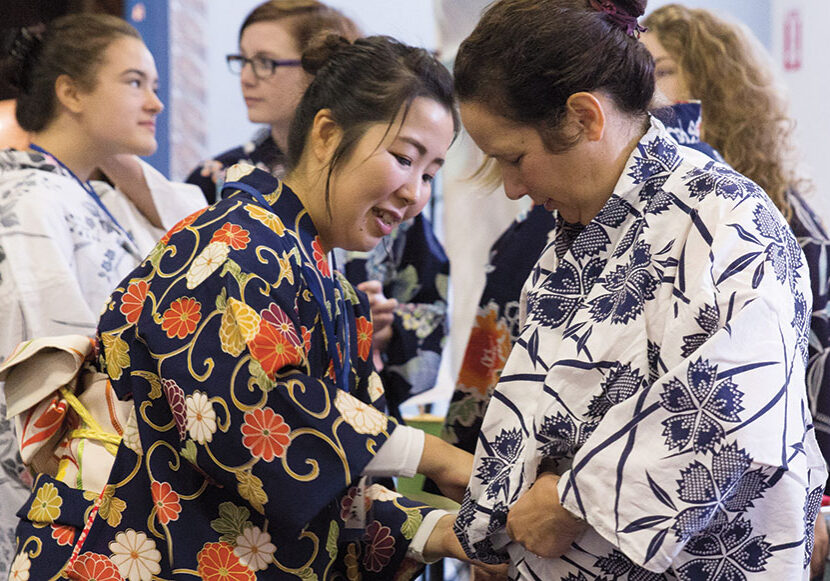Vast is a word often used to describe Alaska. A French restaurateur, failed by superlatives to describe its allure, threw his arms toward the sky and exclaimed, “It’s the… the… dimension!” That sums it up nicely.
While Steinbeck’s Northern California landscapes and lofty cloud cities stretch from horizon to horizon, the scale and grandeur of the skies and the emerald and white mountain ranges in Alaska are like another dimension. It’s hard to wrap your head around the numbers. With more than a half million square miles, over 33,000 miles of shoreline, and the highest mountain peak in North America at over 20,000 feet above sea level, Alaska can sometimes feel like too much, too extreme. Yet the population is less than one million, including 229 tribes of Alaska natives. With four interstate highways that cover a little over 1,000 miles, much of Alaska is not accessible on the road system.
So how can you manage a trip to Alaska, especially with a family?
You can’t do it all in one trip
There are many different regions in Alaska, and it will take multiple trips to Alaska to see it all. Decide what kind of experience you want to have this time, then come again.
Southeast Alaska – Alaska’s panhandle
The glittering waterways between the chain of islands in the Southeast, the “Inside Passage,” is home to Tlinket and Haida Indians, totems and a temperate rainforest climate.
Best way to see it: A one week, round trip on The Alaska Marine Highway, aka, the ferry system. Board the ferry in Bellingham, WA, with or without a car. Sleep in a stateroom, or in airlines-style seating — or in a pup tent outside on the covered deck! Watch orcas leap from the jeweled water, drift past innumerable cataracts on the fjord-like mountains, watch seals sunning on ice floes, and visit little island towns along the way.
Petersburg’s Little Norway Festival, the third weekend in May, fetes you with lefse, pickled herring, and krumkake, while local “Vikings” roam the town. See fishing boats in Ketchikan, petroglyphs in Wrangell, old Russian churches in Sitka, and Alaska’s capital in Juneau.
The ferry turns around in historic Skagway, gateway to the rugged Chilkoot Trail, after a quick stop in Haines to let vehicles and interior residents off, then heads back to Bellingham. Indoor observation decks with large picture windows give great views regardless of the weather. Bring your own food or dine aboard. Queen Charlotte Sound’s open ocean the first day lasts about three queasy hours, the only time you’ll need motion sickness medicine.
This is not a cruise ship. Don’t expect lavish food or onboard entertainment. Get a feel for the real Alaska talking with locals who use the ferry to move from island to island.
South central Alaska – the Matanuska-Susitna Valley
Anchorage is the largest city in Alaska with almost 300,000 people. There is lots to do in the city and environs; it’s the least rustic location in the state, although it does have more bears than Fairbanks.
Best way to see it: You can fly on Alaska Airlines to Anchorage year round, then take the railroad or rent a car to sightsee, using Anchorage as a hub. The Anchorage Museum is downtown and at nearby Earthquake Park you can see the staggering effects from the historic 1964 earthquake. The Alaska Native Heritage Center is 15 minutes away, and the Alaska Wildlife Conservation Center, a fun family stop especially in good weather, is in nearby Girdwood. Watch for the snowy white beluga whales in the Cook Inlet on the way.
From Anchorage the Alaska Railroad takes you through beautiful scenery to Seward’s Alaska Sealife Center (sign up in advance for special tours) or through the tunnel to Whittier, the city that lives in one big building. Or take the train to Denali National Park.
For a long, beautiful drive follow the Powerade-blue waters of the Kenai River down to its mouth. In July dip-netters stand shoulder to shoulder in the surf catching salmon there.
Drive to Valdez for halibut or salmon charters. Fly to Kodiak Island to see Kodiak bears or deer. Or head north on the Parks Highway to Talkeetna Roadhouse, the jumping-off spot before climbers scale Denali.
Memorable journeys on the Alaska Railroad
The Alaska Railroad is one of the nation’s last “whistle stop” trains, meaning you can flag the train down to be picked up. It runs the almost 400 miles between the state’s two largest cities, Anchorage and Fairbanks, in 12 hours. One big benefit of rail travel is the opportunity for your kids to roam fairly freely. There is no internet or entertainment and only a small cantina; but you can bring your own food and drinks.
Stepping out a door to the platform between cars, leaning out into the sunshine to watch the passing wilderness beauty as the train shushes along the rails is just healing to your soul. One treasure not to miss on the cars are the local high school tour guides who speak from experience on Alaska life, geography, plants and locales. Ask to see their carefully curated photo albums.
Interior Alaska — the golden heart
Fairbanks is the largest city in the interior. Located on the 65th parallel, although still south of the Arctic Circle, it has 24 hours of daylight during Solstice on June 21. It can be a little disorienting at first, but locals find it gives them almost 24-hour energy. Most hotels include light-blocking curtains or blinds. You will be outside playing with the family when someone says they are hungry and you discover it’s 9 pm — then you hustle to get everyone fed and in bed!
Best way to see it: Alaska Airlines or Alaska Railroad; or put your own car on the ferry to Haines; but the road from Haines to Fairbanks is rather rough. If you take the ferry, you’ll leave the US and drive through a piece of Canada requiring a customs check at the Canadian border and again re-entering Alaska. Check the hours before you go; the border stations do not stay open 24 hours.
It’s only a 45-minute plane ride from Anchorage to Fairbanks if you want to skip the longer more scenic route. Many Alaska Airlines and Frontier Air pilots started out flying small bush planes; with their hardened flying experience they are the pilots you want.
Pioneer Park, on the Chena River, has playgrounds, local hand-made items for sale in historic cabins, museums, and train rides. Their huge June 23 parade with flags, bands and salutes brings a lump to my throat and tears to my eyes every time. Buy a warrant to lock your family in the Golden Days Jail in the parade during the week-long festivities celebrating Fairbanks’ gold rush history.
You can rent a sea kayak at Pioneer Park and float the Chena River to the historic Pump House Restaurant where you can eat on their lovely deck overlooking the river and watch the boats go by. An adult and a child can easily take a sea kayak together; these larger cousins of the simple kayak are extremely stable. A van takes you and your kayak, or canoe, back to Pioneer Park.
Riverboat Discovery is a three-hour boat ride on the Chena River with an exciting touch-and-go landing by float plane, a dog team demonstration from Susan Butcher’s famous kennel, and a stopover at the manmade, locally staffed Native village where a native Alaskan teen fillets a salmon in scant moments. Their Gold Dredge No. 8 in Fox north of town includes gold panning taught by skillful local teens. You always go home with gold.
The Museum of the North at the University of Alaska Fairbanks has a small listening room at the top with the eerie sounds of “the geophysical forces of Interior Alaska.” The UAF LARS or Large Animal Research Station studies muskox, those throwbacks to the prehistoric era whose wool, known as Qiviut, is worth more per ounce than gold.
You can hike Angel Rocks or Creamer’s Field Wildlife Refuge. Well-behaved dogs on leashes are welcome, but don’t disturb the Canada geese, cranes, and trumpeter swans. Bicycle rental stations are located around the town with many nice bike trails.
30 minutes away in North Pole, Alaska, is Santa Claus House with Santa and Mrs. Claus greeting kids, with reindeer outside.
Take the train from Fairbanks to Denali overnight then go white water rafting in the park the next day (get the one you don’t have to paddle), or tour the Visitor’s Center, watch a sled dog demonstration, and return to Fairbanks or go on to Anchorage. It’s a nice way to break up the Fairbanks to Anchorage trek.
Northern Alaska, the bush, and the Aleutians
Most of the rest of Alaska is off the road or ferry system, aside from some widely spread out fascinating little towns and villages. The North Slope, oil-rich Prudhoe Bay, and the town formerly known as Barrow, Utqiagvik, are several plane rides away, but unusual and amazing by turns.
The beautiful and extreme Aleutian Islands, the only US territory invaded by Japan during WWII, are also harder to visit. Many small Alaska communities are not on the road system. Some are accessible by boat; most by small plane or bush planes.
Be prepared.
Alaska is rustic, and it’s not just a style. Bathrooms may be rough, may be outhouses or port-a-potties, maybe with hand sanitizer. Keep toilet paper and hand sanitizer in your car. The constant freeze/thaw cycles and large tracts of permafrost means roads develop Toyota-catcher potholes rather quickly. Watch for orange cones or flags signaling bad spots and reduce speed.
The good news: there are no snakes or indigenous poisonous spiders in Alaska. The bad news: there are bears (black bears, or grizzly or brown bears), and moose can attack and kill people. Off the beaten track, you are likely to have issues with swarms of mosquitoes or black flies/no-see-‘ems, but they haven’t been known to carry diseases. Quickly changing conditions can mean exposure to extreme weather even in summer. Bring extra layers of clothing, snacks and water if you go even a few miles from a town.
Summer and Winter
Most visitors come in the summer, for good reason — 40 degrees below zero requires cold weather gear you won’t find back home. A young visitor one winter was indignant when told the jacket she wore climbing a snowy mountain in Washington wouldn’t be sufficient for a Fairbanks winter. She understood after her first day waiting for the bus.
Summer temperatures vary widely in the state, and snow is not unheard of even in July. It can also be 90 degrees. Dress in layers you can easily take off and on. Alaskans dress casually, and sportswear is worn almost everywhere. It’s also true that women in Fairbanks picketed when the upscale Nordstrom clothing store closed, the next closest being almost 400 miles away in Anchorage. Dress how you want. Taking people as they are is the Alaskan way.
Planning your trip
TravelAlaska.com, The Milestone Magazine if you’re driving the highways of Alaska or the Alaska-Canada Highway, and The Alaska App, are all great resources for planning. As with everything else at this time, contact each venue to ensure they are open again, post-covid.
Welcome to Alaska where you can relax, be yourself, and introduce your children to the beauty in wild nature.
Posted in: Out & About
Comment Policy: All viewpoints are welcome, but comments should remain relevant. Personal attacks, profanity, and aggressive behavior are not allowed. No spam, advertising, or promoting of products/services. Please, only use your real name and limit the amount of links submitted in your comment.
You Might Also Like...

Fun New Valentine Traditions To Start With Your Family
Valentine’s Day is traditionally a time for couples to express their love for one another, and it is also a great time to show your children how much you love […]
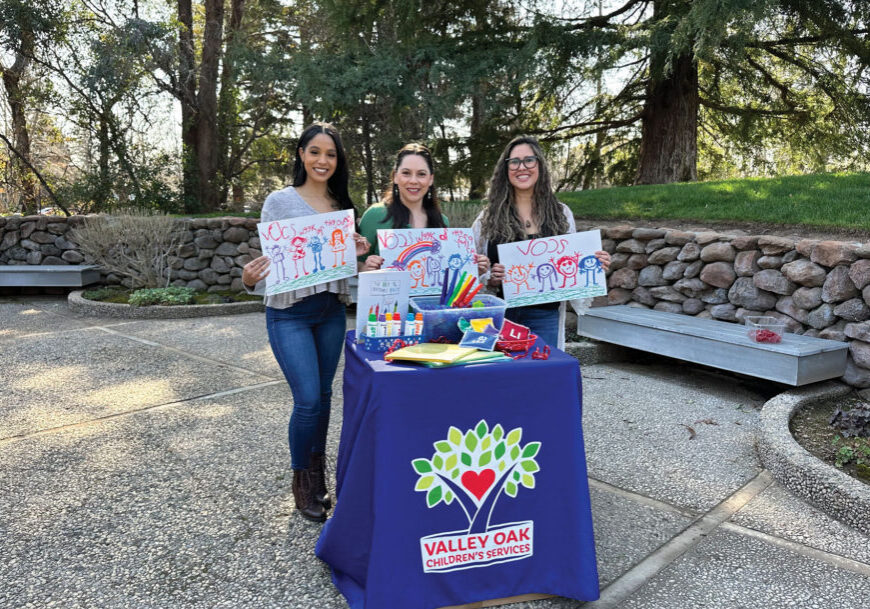
Little Bits to Know
The North State is full of fun services to make raising your young child even sweeter. Here are four happening places that are ready to brighten your lives this spring. […]
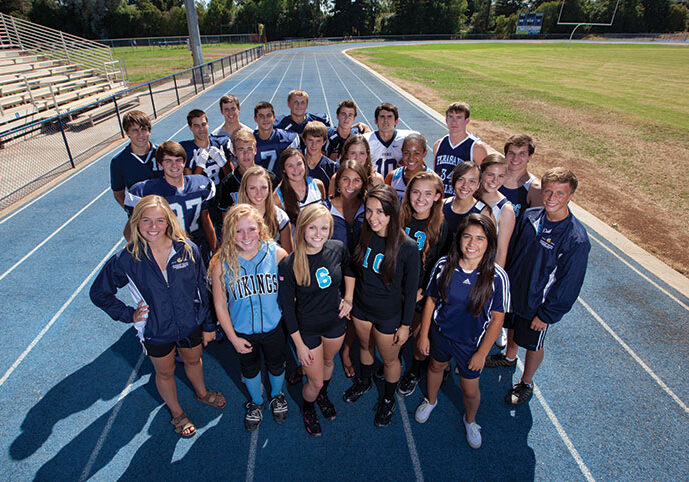
The Committed Athlete, On And Off The Field
Over the past two years, Pleasant Valley High School and Chico High School have implemented an initiative called Athlete Committed, helping to educate over 4,000 parents and student athletes on […]
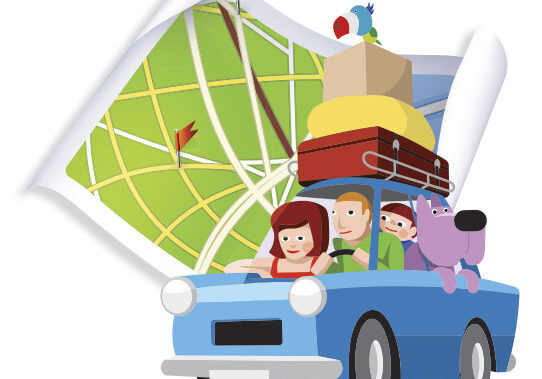
North State Parent Picks for Fun Science-based Adventures
Summer is nearly here and the signs signaling the end of the school year are clear. With some daydreaming, careful planning, and input from our kids, we can look forward […]


